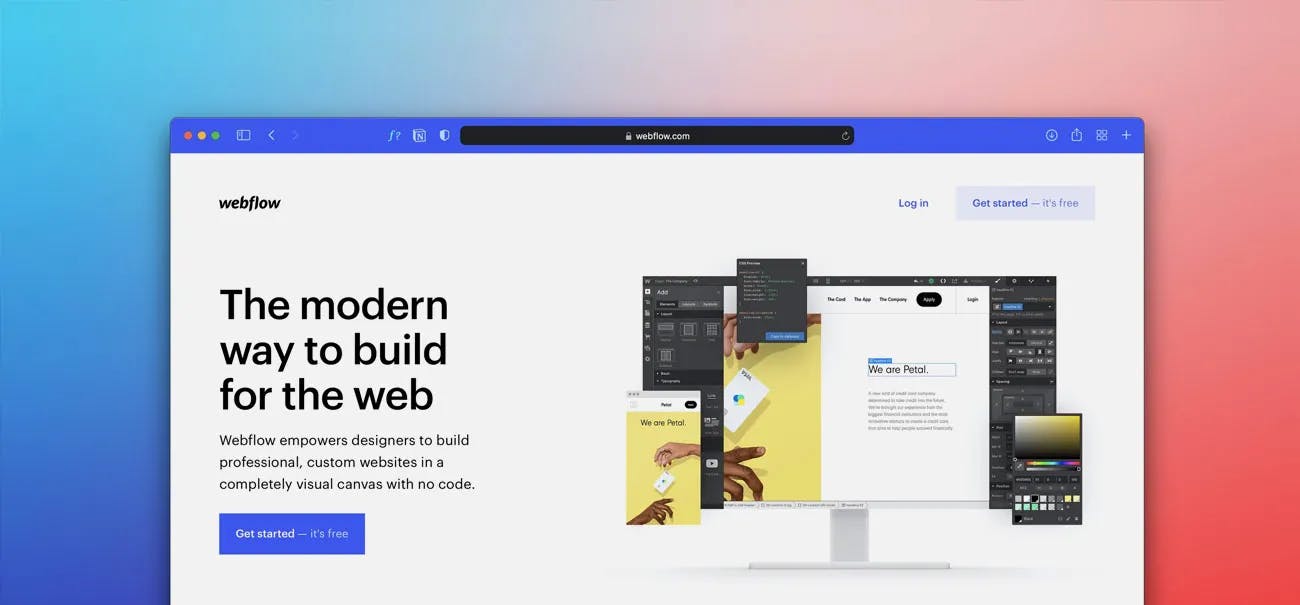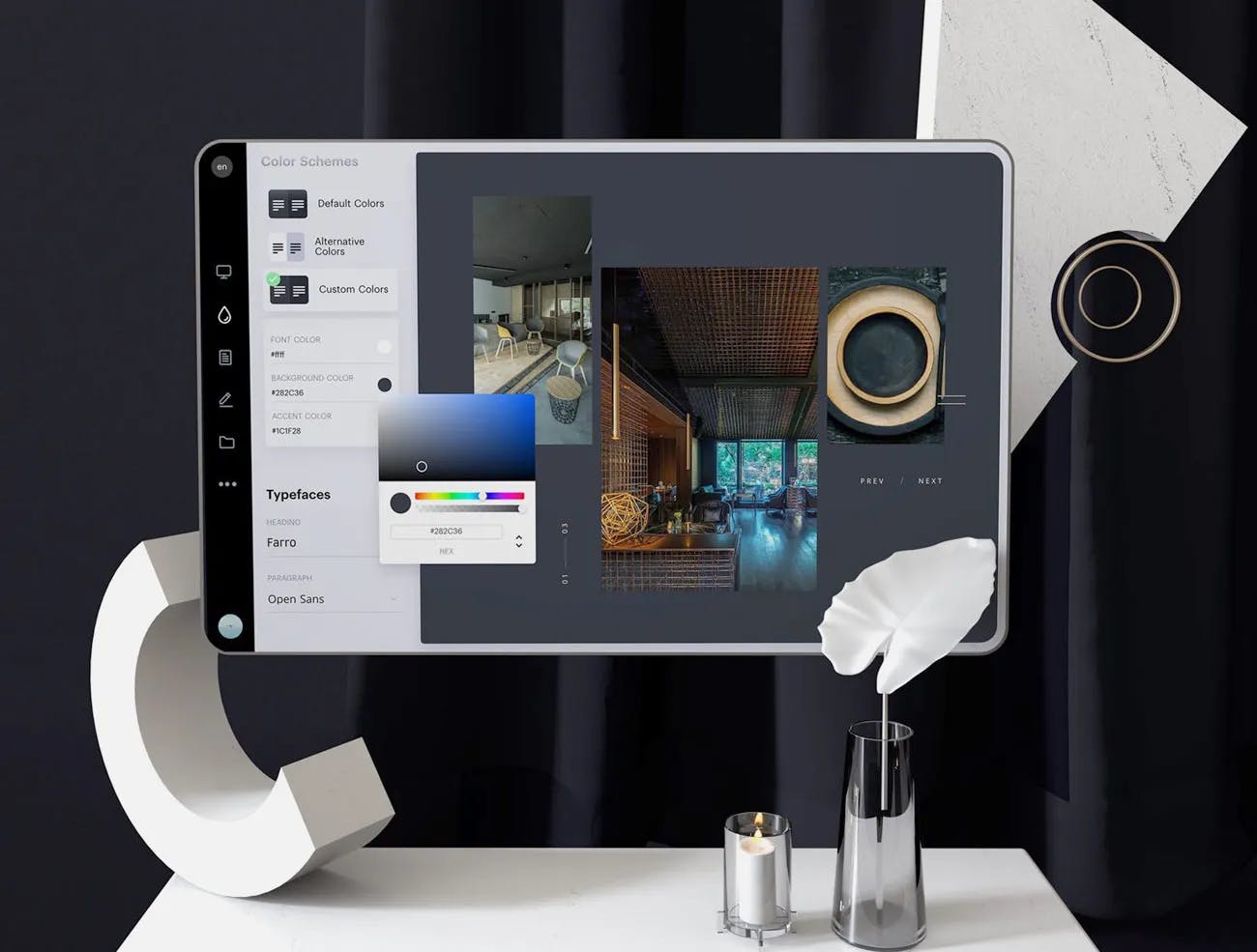We have been made aware of unauthorized use of our company name in fraudulent activities. Fleava only operates through fleava.com. Any other domains or contacts claiming to represent us are fraudulent.
If you receive suspicious messages, do not engage—report them to the authorities. For official inquiries, contact hello@fleava.com.
Discover how No-Code Development changing the future of tech
/ Journal — Insight - Technology
No-code platforms, with or without the hyphen, will be familiar to anyone who is interested in the future of software and how we will interact with computers in a few years. No-Code isn't only something from the future; it's also a thing right now. No-code software development has grown to be a very popular and promising alternative for companies looking to quickly and affordably create their own unique software solutions.
No-Code isn't only something from the future; it's also a thing right now.
Looking back
Computers were totally command-line driven in the early 1970s. You couldn't use a computer if you couldn't code. By the 1980s, early graphic user interfaces created by International Business Machines Corporation (IBM) made it feasible to utilize a computer's fundamental operations without knowing how to code, but the majority of the software was still created and used in a code-driven way. All-in-one products created by pioneers like Microsoft and Adobe greatly expanded the software's user base. The main features of the platform can be used by end-users without them knowing any coding like applications of Microsoft Office and Adobe.
These platforms made it simple to carry out a certain operation without writing any code, but you would need to purchase additional technologies to carry out a different task. Moreover, you needed to master application programming interface development and manually code the connections if you wanted these systems to link or communicate in any way.
What is no-code?
Through the use of a graphical user interface, "no-code" web development allows both programmers and non-programmers to create applications without writing any code. At its most basic level, it is programming without the use of code, which can apply to scripts, websites, mobile apps, complete programs, or even just apps. This implies that anyone, including inexperienced tech writers, may develop something online or on their PC and think it will function.
No-code platforms included, every piece of technology is created using code. The distinction is that no-code platforms offer the fundamental components—such as pages, data storage, and presentation, user-specific profiles, or file upload—that any website or application needs. After that, people can combine these into their own application by using drag and drop or other "human-understood" actions that don't involve coding.
No-code web development allows both programmers and non-programmers to create applications without writing any code.

Squarespace — a no-code web builder platform.
What’s the benefit of no-code?
Making a web application or creating a website appears insurmountably difficult for the majority of us who aren't proficient coders. But now everyone can use an area that was previously only accessible to developers and people with advanced coding skills. Anyone can now publish their ideas thanks to the no-code movement, which has eliminated the barrier to programming language knowledge.
What advantages do writing programs without coding have for businesses? A few ways adopting the no-code development framework WEM to create business-critical applications offer value to the organization include time savings, cost savings, and an all-in-one approach.
You can devote more time to getting to know your customers and developing engaging content if you choose a no-code application building platform. No-code architecture tools abstract a lot of the complexity involved in building the front-end user experience by providing rich models to use and adjust. With UI/UX, you don't have to start from scratch, and the time you save will let you spend more money on making your app more enjoyable to use.
You can devote more time to getting to know your customers and developing engaging content if you choose a no-code application building platform.
In terms of business, no-code program creation can cut development costs by as much as 80%. It should come as no surprise that traditional and DevOps methods for creating custom software are costly. You'll need to hire valuable technical abilities further up the stack. To create your project, you might need to hire front-end and back-end developers, finance specialists, security consultants, and software and cloud professionals.
The complexities of front-end and back-end development are abstracted for no-code application development. A single front-end or back-end developer may construct the entire stack. They won't have to write any of the code from scratch, and they'll advance more quickly. When creating a network, you don't have to consider supporting systems like cases, databases, or security.

Webflow — a no-code web builder platform.
Important characteristics of no-code development
1. Data Connections
The majority of no-code application development platforms either provide a straightforward user interface to connect with the database of your choice or are pre-configured with server-side and database software. In addition to helping you create user-facing visuals, a good no-code platform will also enable you to manage and analyze data in the background as you carry out your business activities
2. Drag—and—Drop Interface
The simplicity of use is one of the main factors driving no-code development platforms' positive attention and rapid growth. The main component of drag—and—drop is largely responsible for making this happen. You may easily drag and drop the feature you need to develop for your application with this feature. It enables you to do the task swiftly.
3. User Interface Builder and Visual Modeling
The majority of no-code platforms offer a user interface builder that enables users to quickly put together pre-configured components to create software or a blog. Drag and drop modules into a logical chain to create features in a no-code platform. Since everything has already been produced or graphically represented, there isn't really any scripting required; all you need to do is drag, drop, and assemble.
4. Integrations
Every day, the world becomes more interconnected. To enhance and automate cooperation and workflow, the majority of firms employ numerous applications and seek connectivity. The majority of no-code platforms provide a range of software interfaces so you may link your data and processes without duplicating or doing manual labor. You may quickly combine the apps you create with a no-code platform with all types of online applications by leveraging API integrations.
Take for example, Vold — a next-generation web management platform we developed for our clients to manage their website. At the very core, it is a headless Content Management System (CMS), but was enriched with features like front-end editor and drag-and-drop modules, to make it super easy to manage websites.

Vold — a no-code web management system.
Limits of No-Code
Despite this, no-code unquestionably has its limitations. In general, the more complex the tool you're using, the more complex the object you're constructing.
The foundational elements of visual programming languages like Scratch will be utilized by many of the apps we've described. Even while they're often regarded as better than fully-fledged languages for learning how to program, it's still programming, so you need to get used to that mentality.
For instance, when writing a script, you must think logically in terms of "if this happens, then that would happen." That's straightforward enough, but you must also consider how your actions may have an impact on others, especially if you use conditional statements in a daisy chain. The practical aspect is that these tools are easier to use the more programming knowledge you have, but that is primarily the abstract side of things.
Website builders (such as Squarespace and Wix) are a good example: While no-code makes it simple to create a website without any prior CSS or HTML knowledge, they are much simpler to use if you do. Any particulars that you don't like can also be changed the more you know about programming.
The same is true for projects that are significantly more complex; a programmer can accomplish much more with Unity than the aforementioned illiterate tech writer and pick up the program's controls much more quickly. The conclusion is that even while no-code is a fantastic technology that will drastically alter the internet. You should still learn how to code if you're serious about becoming a maker.
Will developers be replaced by no-code?
Programmers won't be disappearing any time soon. Application developers will always have some involvement in the process. You need more than simply the ability to write code to be a good developer; you also need logic, method, and skills that no-code platforms cannot offer. No-code cannot take the role of scripting and the expertise of software engineers. Additionally, the no-code opens the door for a brand-new class of programmers known as no-code developers, who will carry out no-code-related projects on well-known platforms.
Read: Our Web & App development services.
However, writing code could start with no code. Even with a drag-and-drop interface, Webflow never hides what's under the designs. You can choose to view the complete HTML and CSS that serve as the framework for the entire website. Any modifications you make to the layout are immediately reflected in the generated code. Webflow offers you a look behind the scenes to better comprehend if you're curious about how code operates.
Programmers won't be disappearing any time soon. Application developers will always have some involvement in the process.
Future of no-code
No-code makes it simple to create unique apps that are secure and easy to use without any coding knowledge. As a result, more businesses are probably going to embrace no-code products for internal messaging, time tracking, and even task tracking, which are simply used by employees.
This may be the case, in particular, for startups that lack the funding to purchase pre-existing SaaS platforms or that, due to the innovative nature of their business, have special requirements.
In these situations, the new founders won't have to go through the traditional process of creating a wireframe and raising money to create their MVP. Instead, future no-code solutions will make starting a software company simpler than ever. In a few days, you can construct a full-fledged prototype entirely on your own, after which you can begin testing the product and selling it right away.
This will have a significant impact on those who wish to use technology to solve local business problems but don't have a sizable enough market to attract venture capitalists or software engineers to develop a code-based solution.
Beyond corporate use cases, the no-code movement will make it simpler than ever for neighborhood associations, nonprofit organizations, and charities to create custom apps to further their missions. Individuals can create no-code apps for their own lives, outside of businesses, to communicate with friends, run their own communities, or create automation to make certain aspects of their lives simpler or more effective. The real strength of no-code is not that it offers a novel approach to app development. It's the fundamental change in who can create a website or an app.
Conclusion
Coding has a challenging learning curve; to create even a basic calculator function, let alone a sophisticated program or website, requires you to master an entirely new language. No-code development has advanced to the point where capable website and web app builders can duplicate the labor of a single developer.
The potential is still untapped, as developers are attempting to make no-code platforms not only more potent but also more user-friendly and intuitive. This will genuinely democratize access to no-code technology building options.

